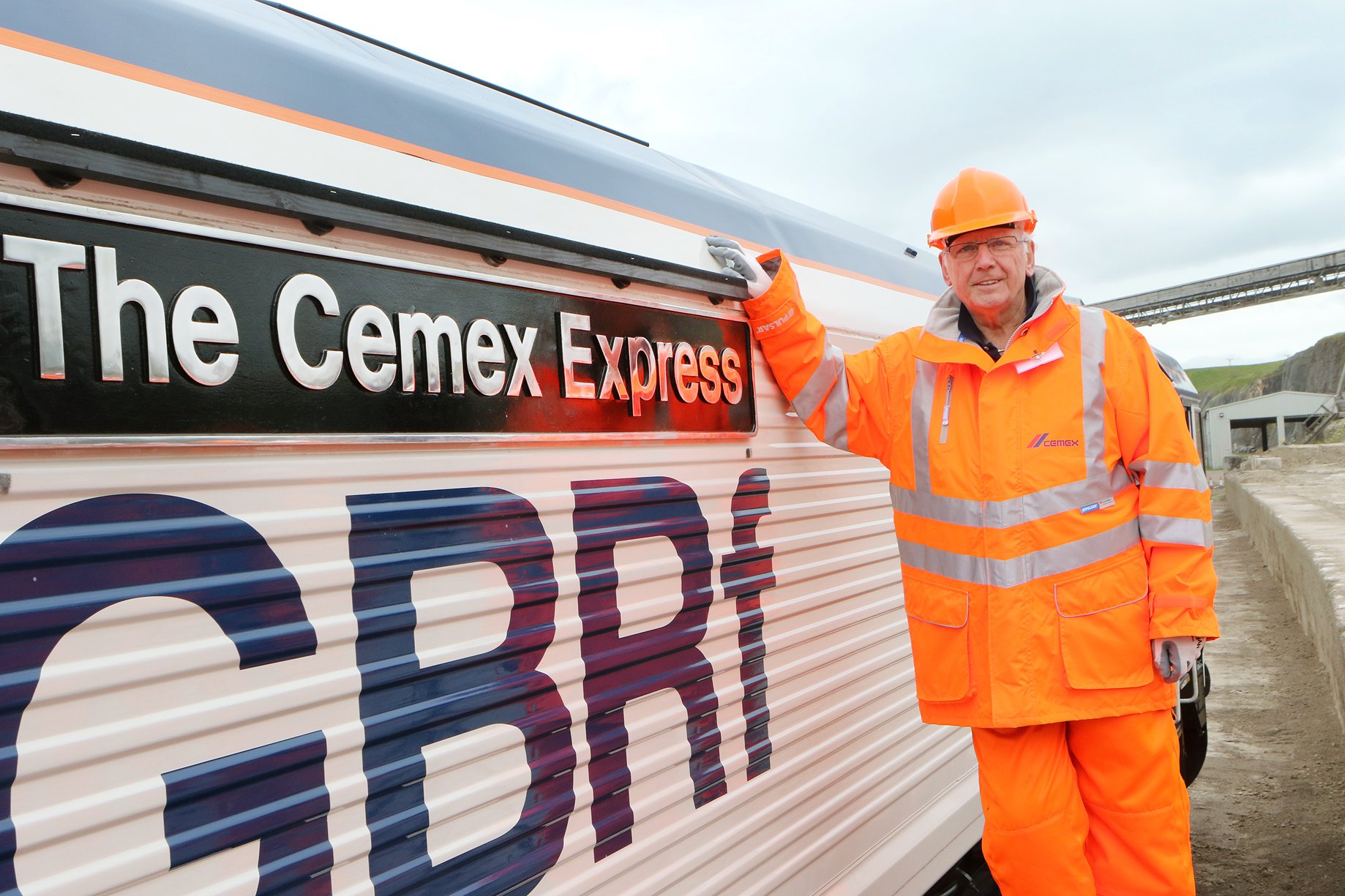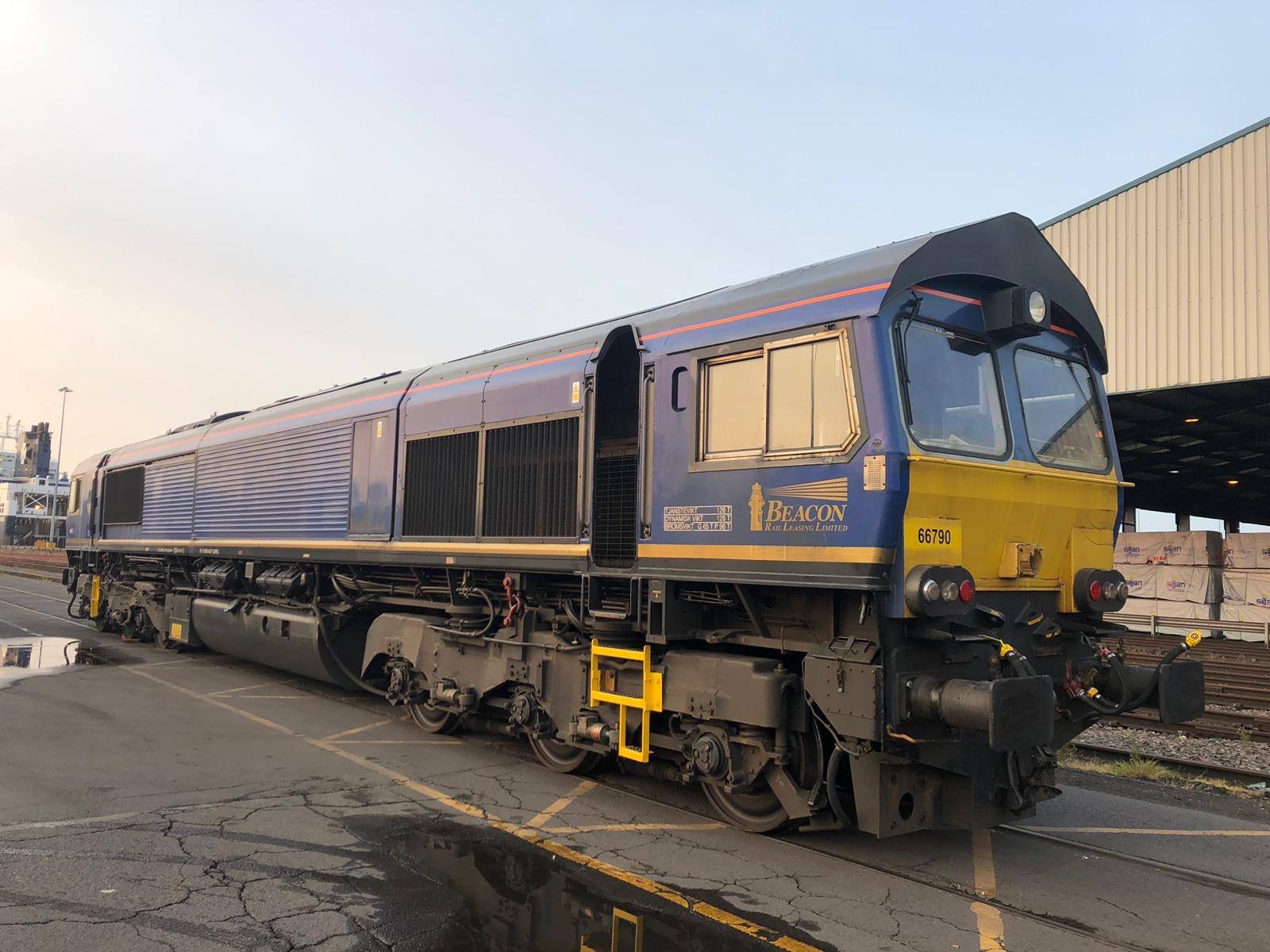On Wednesday, GB Railfreight (GBRf) and Global building materials supplier CEMEX presented the new CEMEX-liveried locomotive at a dedicated naming ceremony held at Dove Holes Quarry, Buxton.
The new locomotive is called The Cemex Express. The name was unveiled at the event by record producer and rail enthusiast Pete Waterman. Resplendent in the white, blue and red colours of the CEMEX brand, the vehicle recognises the partnership between GBRf and CEMEX, which has now been in place for one year.
The Cemex Express, a Class 66 Locomotive, will travel typically between Dove Holes quarry, carrying premium aggregate for readymix and asphalt plants, and external customers throughout the UK. It will pull 22 to 26 hopper wagons that discharge their loads from underneath directly onto the plant’s conveyors. A single trainload can deliver up to 2,000 tons of material in one trip and will make over 200 trips for CEMEX each year; the equivalent of over 20,000 truckloads.
John Smith, Managing Director of GBRf, said:
“We are delighted to unveil this fantastic Class 66 locomotive, painted in the CEMEX livery and representing our two organisations’ ongoing partnership. This contract is demonstrative of the role rail freight has to play in helping the UK to cut carbon emissions and to improve air quality.
On average, one gallon of fuel will move one tonne of goods 246 miles on the rail network, while the same amount will only get you 88 miles by road. Rail freight’s CO2 emissions are 76 per cent lower than road’s, per tonne carried. An average freight train removes 60 HGV journeys from the roads and the largest up to 160. When this is combined with rail’s advantageous performance in terms of nitrous oxide and particulate matter emissions, rail freight demonstrates a clear contribution to the challenge of meeting the UK’s carbon-cutting targets.”
David Hart, CEMEX’s Supply Chain Director for UK & France, commented:
“The transport of our product by rail is of ever-increasing importance to CEMEX as we look to make our operations as sustainable as possible. Rail is a far more environmentally friendly method of transport than trucks on the road, as a train burns significantly less fuel per ton-mile than road vehicles, saving around 50% in CO2 emissions.
CEMEX UK currently transports 2.6 million tonnes of aggregate by rail each year which equates to approximately 100,000 trucks off the road; enough to build 40,000 houses; and we want to continue to build on this. We are very proud of our partnership with GBRf and hope that together we will be able to transport more and more by rail safely whilst reducing the number of truck movements.”
Lex Russell, Managing Director for UK Materials North at CEMEX, added:
“Dove Holes is one of CEMEX’s most important quarries and generates several million tonnes of limestone aggregates every year, as well as asphalt, readymix, concrete products and dry silo mortar. By rail we then supply many locations across the UK including key cities such as Manchester, Liverpool, Leeds, Sheffield, Birmingham and London. It was therefore the perfect location to unveil the new Cemex Express locomotive and take the opportunity to thank those in our team and at GBRf for their hard work and dedication to our rail partnership.”




